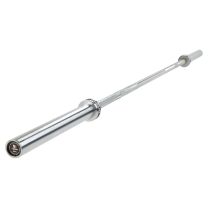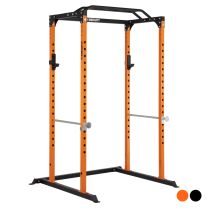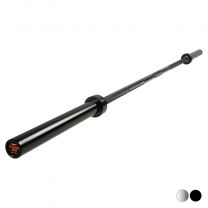Powerlifting: A Passion, A Lifestyle, An Artform
Powerlifting: A Passion, A Lifestyle, An Artform

At its simplest, Powerlifting is one of the most effective ways to build strength. At the other end of the scale however, the sport offers a level of complexity that can take years to master.
The positioning, the grip, the breath and the execution. Each lift is a chain of movements stitched seamlessly together. And each lift requires your all – both mentally and physically.
But where did powerlifting come from? And why is it growing at such a phenomenal rate?
We spoke to Matthew and Richard Parker, key stakeholders at British Powerlifting (BP), to find out where it all began.
THE BEGINNING OF POWERLIFTING

Powerlifting hasn’t always been its own separate discipline. In fact, head back to the late 1800s and strength competitions were much more weird and wonderful than their modern-day equivalents.
“During that time, weightlifting was more generic, and some of the lifts were quite funny,” says Matthew. “Established lifts, and other tests of strength, included single hand overhead lifts and grip-based feats such as holding sledgehammers at arms-length,” he says.
As the years went on, weightlifting became much more established and was made a regular event at the Olympics. But as weightlifting developed, so did the breakaway-disciplines and that’s when powerlifting started to emerge.
By the 1950s there were 42 recognised lifts. Three of those moves, however, stood out: the curl, the bench press and the squat. Together, these were known as the ‘Strength Set’ and soon became standard competition lifts.
In 1966 the curl was dropped and replaced by the deadlift. And in that same year, the first British Powerlifting Championship was officially held.
Fast-forward to 2008 and powerlifting had finally become its own entity and was officially regulated by The Great Britain Powerlifting Federation.
“There are still organisations that deal with the slightly more peculiar lifts but over the years both weightlifting and powerlifting have been refined down. Weightlifting into the snatch and the clean and jerk; and powerlifting into the three main moves: squat, bench press and deadlift,” says Matthew.
Today, the organisation is known as British Powerlifting and they are the cornerstone of powerlifting across the UK.
POWERLIFTING TODAY

Over the past decade, British Powerlifting has grown at an incredible rate.
“When we first split from the former Weightlifting Association in 2008, we had 750 members,” says Richard, CEO of British Powerlifting. “Last year, however, we had just under 4,500 members,” he says.
As well as a rise in numbers, there has been another significant increase: “Around a third of our members are now female which just goes to show the diversity of the sport,” says Richard. “In days gone by, powerlifting would have been practised in boxing-style clubs where women weren’t accommodated or even invited to take part.”
Today, it’s a different story and powerlifting is one of the most inclusive sports around with competitors ranging in age from 14 to 80+.
“There are very few limitations as to who can take up powerlifting,” says Matthew. "We have families who compete with three generations of lifters.”
British Powerlifting covers the four home nations of Northern Ireland, Scotland, Wales and England. Each nation is split up into a number of regions, with coaches and lifters in each one.
British Powerlifting runs competitions across the UK at country, club and area levels. They also compile the international teams who go on to attend the World and Commonwealth Championships.
“It can take hours and hours of training to hone the necessary skills to compete – it's a real art form. And it’s not just about the strength either, it’s also about the mental fortitude,” says Matthew.
“As soon as you start competing and you have some official numbers on the board, that’s when it all begins.
“The atmosphere at our competitions is great... There’s a fantastic level of camaraderie and everyone is very supportive of each other.
“The organisation feels like one big family. There are a lot of lifters who have been around for decades but equally there are lots of new lifters too. Everyone seems to know each other, it’s fantastic.”
As well as a comprehensive rule book, British Powerlifting also drug tests at the regional and British championships.
“Everything we do is in accordance with WADA guidelines (World Anti-Doping Agency) and all drug testing is independent, so we don’t come into contact with the samples,” says Richard.
POWERLIFTING IN THE FUTURE

Even though powerlifting has been established for a good 60 years, it still isn’t an Olympic sport.
“That’s our end objective,” says Richard. “If powerlifting became an Olympic sport, we would get formal recognition from Sport England for example. It’s a very difficult process though.”
British Powerlifting however continues to grow and there are lots of ways you can show your support:
BECOME A MEMBER
By signing up to become a member of the British Powerlifting, you’ll have the opportunity to compete in all of their official competitions. Membership is renewed annually and can be done quickly and easily on the BP Website.
WATCH BP EVENTS ONLINE
Competitions can be viewed via the BP YouTube channel. Subscribe to the channel and hit the bell to get livestream notifications.
FOLLOW BP ON SOCIAL MEDIA
Get all the latest information and find out about upcoming powerlifting events via Instagram, Twitter and Facebook @gbpowerfed.
For more content, follow us on Instagram, YouTube, TikTok, and on our official Mirafit Facebook page.
Enter your email to signup to our newsletter
Tags: Exercise Type > Strength






